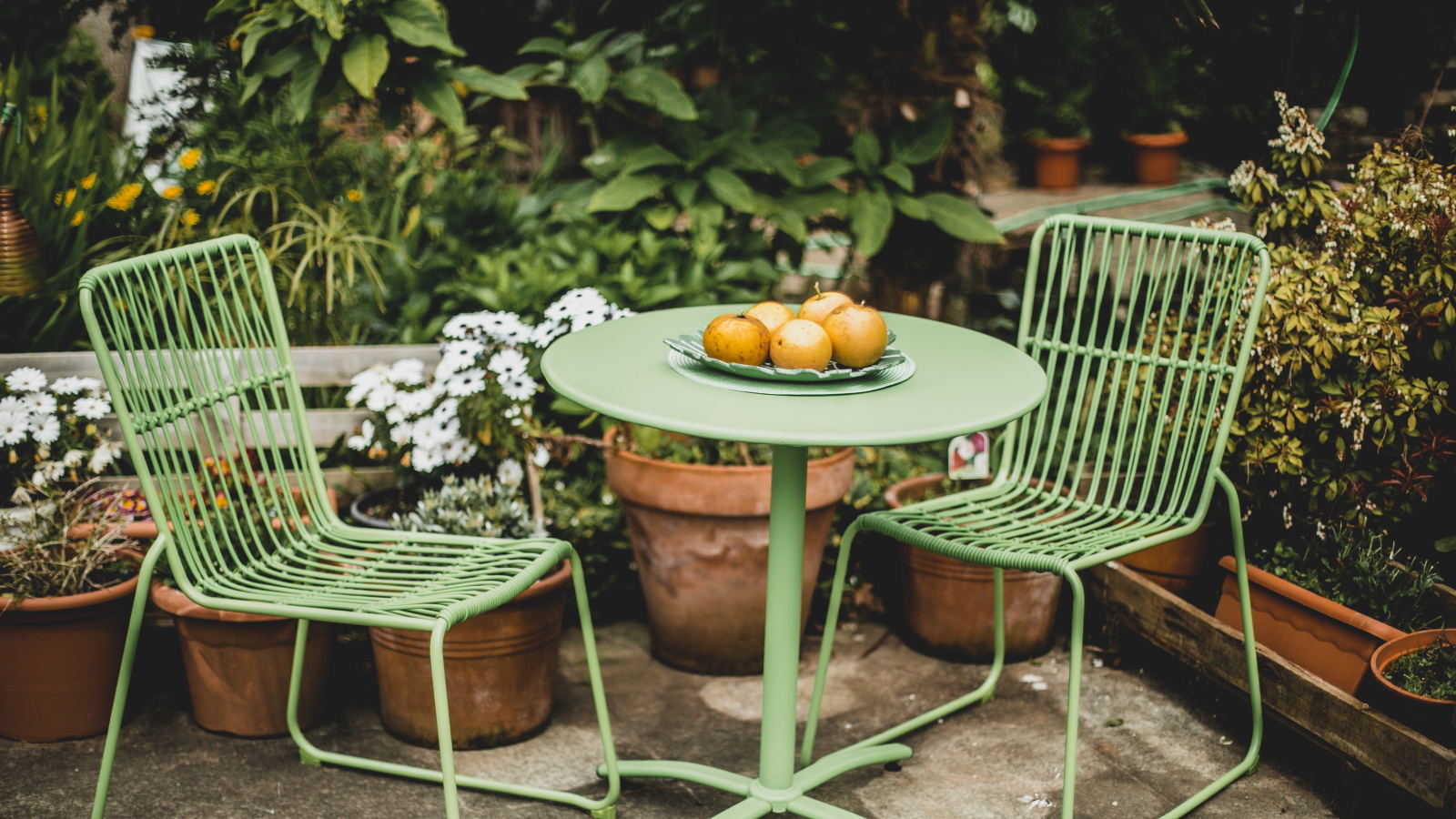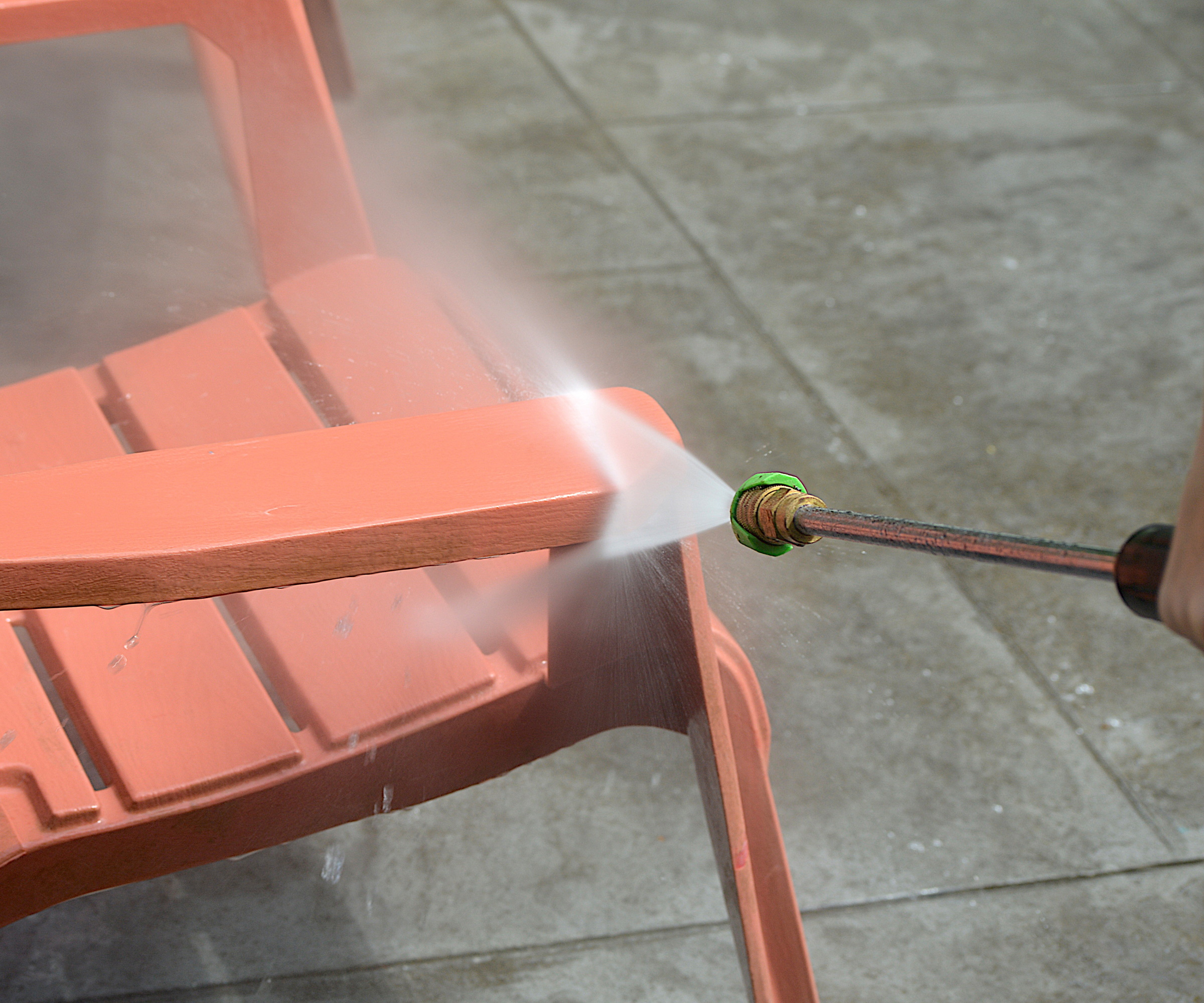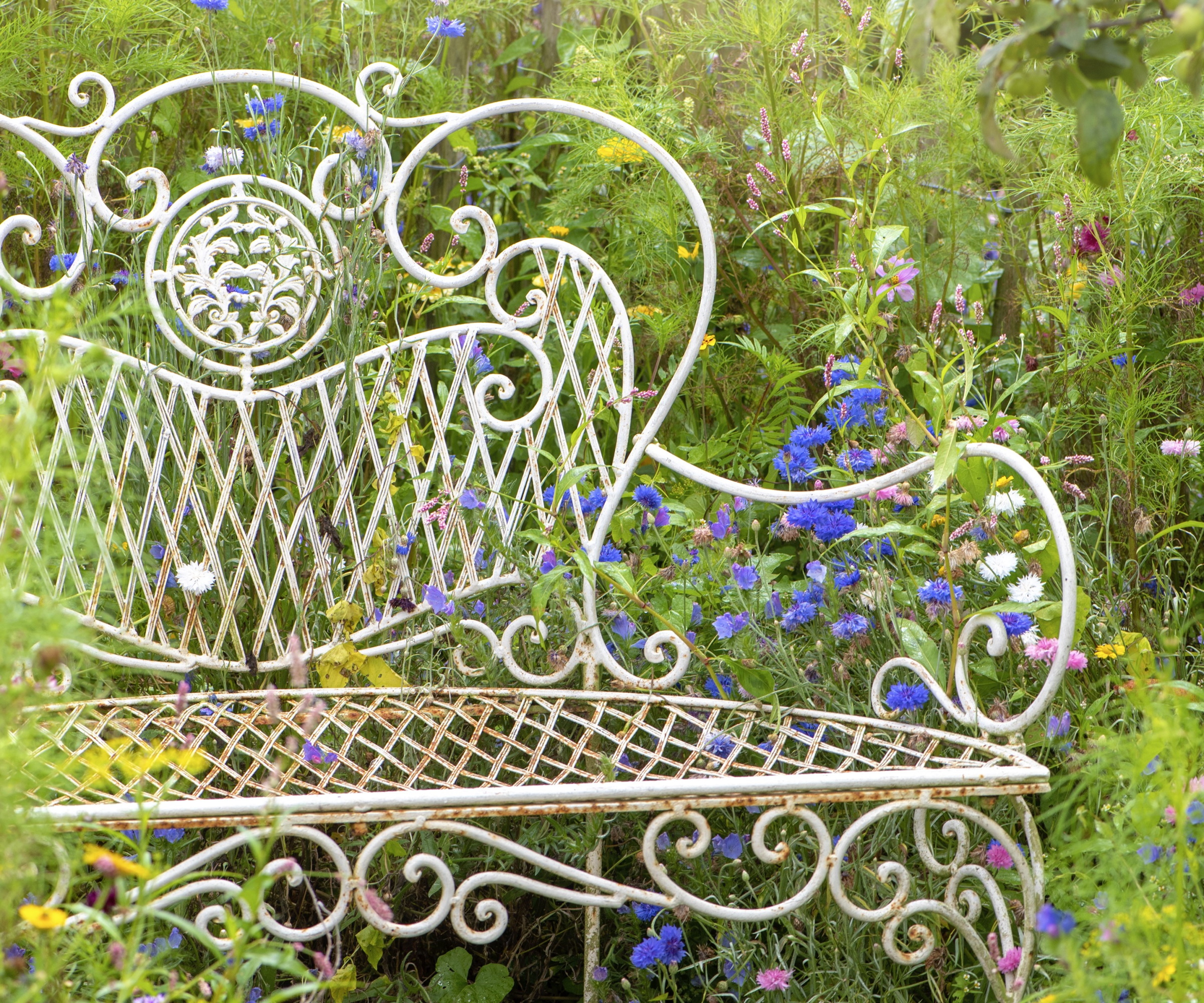Can I use a pressure washer to clean patio furniture?
As temperatures rise, cleaning outdoor furniture becomes a priority, but using a pressure washer can do more harm than good


As winter turns to spring, many of us contemplate the best approach to backyard cleaning to ensure that our outdoor spaces look as good as possible for the warmer months ahead.
While pressure washers can be a useful tool for removing built-up dirt from paving or decking, it is important to remember that there are things you should never clean with a pressure washer. Certain garden furniture items made from specific materials should be cleaned with care, and often, using a pressure washer can do more harm than good.
Here, we discuss what patio furniture can and cannot be cleaned using a pressure washer, and alternative cleaning methods that will avoid damaging your tables and chairs, while not compromising on results.

Can I use a pressure washer to clean patio furniture?
Pressure washers can be a useful and powerful tool for cleaning your outdoor space. Certain items of garden furniture, however, should not be cleaned with a pressure washer as this can cause irreparable damage.
Before you crank the pressure washer up to full power, consider whether it is best to put the pressure washer away, and rely on good, old-fashioned elbow grease.
Patio furniture never to clean with a pressure washer

While the power of a pressure washer might be appealing for blasting away the dirt and cobwebs from the fall and winter months, it is generally not recommended to use this tool for cleaning your garden furniture.
'Excessive force from a pressure washer can damage the surface of patio furniture,' says Rachel Bull, head of gardens at Homes & Gardens. This is particularly the case with the popular rattan and wooden garden tables and chairs. 'Pressure washers are much too powerful for these materials,' continues Rachel, 'even on a low setting, the high pressure of the water can remove the top layer or coating from rattan or wood.'
Design expertise in your inbox – from inspiring decorating ideas and beautiful celebrity homes to practical gardening advice and shopping round-ups.
Removing this outer stain or treatment will not only change the color of rattan or wooden patio furniture but can also weaken the structure of the material, leaving it vulnerable to sun and water damage. This is particularly the case for softwood furniture, including products made from pine, redwood and cedar.
Stone is another material that you should not clean with a pressure washer. While not as popular as it once was, old stone benches and sculptures are susceptible to damage when cleaned with high-pressure water.
'While stone tables or benches may discolor or seem overgrown with moss, you should never clean them with a pressure washer,' says Rachel. 'It is best to use a soft brush and a soapy solution.'
This rule generally applies to all stone and wooden garden furniture, and the old-fashioned approach of using soapy water and a brush or a cloth is the most effective. Many products are available that are specific for patio furniture, including this non-abrasive outdoor furniture cleaner from Walmart or this stone cleaner from Walmart.

Rachel is a gardening editor, flower grower and floral designer. Her journalism career began on Country Living magazine, sparking a love of container gardening and wild planting. After more than a decade writing for and editing a range of consumer, business and special interest titles, Rachel became editor of floral art magazine The Flower Arranger. She then trained and worked as a floral designer and stylist in London for six years, before joining the Homes & Gardens team.
Patio furniture you can clean with a pressure washer

Metal chairs and tables are far more hardwearing and resistant than rattan or wooden furniture in the backyard. While it is possible to use a brush and soapy water to clean metal furniture, pressure washing and/or sanding might be the only way to remove weathered stains and rusting.
When cleaning metal furniture with a pressure washer, it is recommended that you use a low-power setting, and begin by standing at least 6 feet away, gradually inching closer as you determine what proximity is suitable without causing any damage to the furniture.
It is not recommended to use a pressure washer on any antique or particularly worn metal furniture, which can cause damage to precious items. Once washed and dry, it might be necessary to repaint your metal furniture after cleaning, using something like this metal and anti-rust paint from Walmart.
Hard-wearing plastic furniture can also be cleaned with a pressure washer, and annual cleaning will help to remove stains and dirt. As with metal furniture, it is best to begin cleaning by standing at least 6 feet away, gradually working closer as you determine what pressure and proximity is needed to suitably clean your patio table and chairs without causing any damage.
While pressure washers can be used for both metal and plastic furniture, using this tool can often do more harm than good. If you are keen on using a pressure washer, it is best to do a test patch on a chair leg, for example, to assess if pressure washing is suitable for your patio furniture.
FAQs
When is the best time to clean your patio furniture?
Patio furniture should preferably be cleaned at the beginning of the growing season in spring, just as temperatures begin to rise. Doing so will ensure that your patio table and chairs are clean and ready for use in spring and summer. You can clean furniture again in the fall when it is time to either bring the furniture indoors to the shed or garage or cover it. Cleaning patio furniture should always be done in mild, dry weather, with soapy water kept away from grass and planting areas.
While pressure washers can be an effective tool to help you spruce up your patio areas, adopting an old-fashioned approach, using a scrubbing brush and warm, soapy water, can often achieve the best results without causing any damage to your furniture.
If spring cleaning is on your to-do list, consider also how to clean an outdoor rug before summer socializing begins, to ensure that your patio areas continue to look their best.

Thomas is a Content Editor within the Gardens Team at Homes and Gardens. He has worked as a professional gardener for both public spaces and private estates, specializing in productive gardening, growing food and flowers. Trained in Horticulture at the Garden Museum, he has written on gardening and garden history for various publications, including The English Garden, Gardens Illustrated, Hortus, The London Gardener and Bloom. He has co-authored a Lonely Planet travel book, The Tree Atlas, due out in 2024.